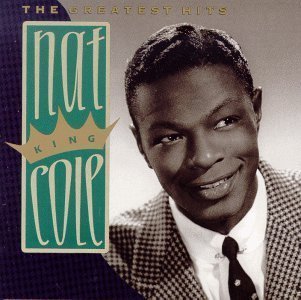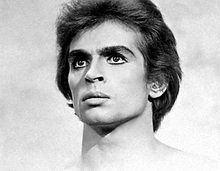Saint Patrick's Day, although a legal holiday only in Savannah, Georgia, and Suffolk County, Massachusetts, is nonetheless widely recognized and celebrated throughout the United States. It is primarily celebrated as a recognition of Irish and Irish American culture; celebrations include prominent displays of the color green, eating and drinking, religious observances, and numerous parades. The holiday has been celebrated in what is now the U.S since 1601.
According to the National Retail Federation, consumers in the United States spent $4.4 billion on St. Patrick’s Day in 2016. This amount is down from the $4.8 billion spent in 2014.
The first recorded St Patrick’s Day celebration in America was in St. Augustine, Florida, in the year 1600 according to Dr. Michael Franicis's 2017 research. Franicis discovered the first St. Patrick Day Parade was also in St. Augustine in 1601. Both were organized by the Spanish Colony's Irish vicar Ricardo Artur (Richard Arthur).
Many people choose to wear green colored clothing and items. Traditionally, those who are caught not wearing green are pinched "affectionately".
Many parades are held to celebrate the holiday. The longest-running public parades are:
- Boston, Massachusetts, since 1737. This began as a gathering, not a parade.
- New York City St. Patrick's Day Parade, New York City, New York, since 1762. This began as a gathering, not a parade.
- Philadelphia, Pennsylvania, since 1771
- Morristown, New Jersey, since 1780
- New Orleans, Louisiana, since 1809
- Buffalo, New York, since 1811
- Savannah, Georgia, since 1824
- Carbondale, Pennsylvania, since 1833
- New Haven, Connecticut, since 1842
- Cleveland, Ohio, since 1842
- Milwaukee Saint Patrick's Day Parade, Milwaukee, Wisconsin, since 1843
- Chicago, Illinois, since 1843
- Saint Paul, Minnesota, since 1851
- San Francisco, since 1852
- Atlanta, since 1858
- St. Patrick's Day Parade Scranton, Scranton, Pennsylvania, since 1862
- Pittsburgh, Pennsylvania, since 1869
- Kansas City, Missouri, since 1873
- Butte, Montana, since 1882
- Denver, Colorado, since 1889
- Rolla, Missouri, since 1909
- Holyoke Saint Patrick's Day Parade, Holyoke, Massachusetts, since 1952
- Baltimore, Maryland, since 1953
- Bay City, Michigan, since 1955
- Detroit St. Patrick's Parade, Detroit, Michigan, 1959
- Pearl River, New York, since 1963
- Cincinnati, Ohio, since 1967
- Delray Beach, Florida, since 1968
- St. Louis, Missouri, since 1820. This began as a gathering, not a parade.
- Norfolk, Virginia, since 1968
- Washington, D.C., since 1971
- Seattle, Washington, since 1972
- Louisville, Kentucky, since 1974
- Rochester, New York, since 1977
- Dallas, Texas, since 1979
- Indianapolis, Indiana, since 1980
- Lexington, Kentucky, since 1980
- Peoria, Illinois, since 1980
- San Diego, California, since 1981
- Columbia, South Carolina, since 1982
- Alexandria, Virginia, since 1982
- Worcester, Massachusetts, since 1983
- Birmingham, Alabama, since 1984
- New London, Wisconsin, since 1984
- 1 (3- to 3-1/2-pound) corned beef brisket with pickling spices
- 8 cups water
- 4 potatoes, peeled and cut into quarters
- 4 carrots, peeled and cut into 2-inch chunks
- 1 green cabbage, cut into 2-inch wedges
- In a large Dutch oven over high heat, bring corned beef with pickling spices and water to a boil. Reduce heat to low, cover, and simmer 2-1/2 hours, or until almost fork-tender.
- Add potatoes, carrots, and cabbage to corned beef and continue cooking, covered, 25 to 30 minutes, or until vegetables and corned beef are fork-tender.
- Place corned beef on a cutting board and slice across the grain. Serve with vegetables.
Common Questions About Corned Beef
So your corned beef is in the pot, you've checked it with a fork, but you're scratching your head wondering if it's "fork tender" and asking yourself "How do you know when corned beef is done cooking?" Well, the answer is simple! If you have a meat thermometer handy, insert it into the meat (being sure not to touch the sides or bottom of your cooking pot!), and check the internal temperature. Corned beef should be cooked to a minimum of 145 degrees Farenheit for the ideal tender, juicy result.
Another very common question is "Do you rinse corned beef before cooking?" And the answer is yes, absolutely (unless you want a very salty result). Don't worry that this will rinse away all the flavor, though! All you're doing is removing the excess salt which has been infusing the meat with loads of flavor, up until cooking time--it's supposed to be removed before going on the heat! That little seasoning packet will continue adding plenty of delicious flavors to your recipe as it cooks, and you won't miss that excess salt.
And births this date include...
1936 – Ken Mattingly, American astronaut
1955 – Gary Sinise, American actor
1964 – Rob Lowe, American actor
HOW TO OBSERVE
SAINT PATRICK’S DAY HISTORY
In Ireland today, the serving of corned beef is geared toward tourist consumption. Most Irish in Ireland do not identify it as native cuisine.
- In the United States, corned beef is often purchased ready to eat in delicatessens.
- Smoking corned beef and adding spice mixes produces a smoked meat such as pastrami.
- Corned beef can be found sold in minced forms and cans.





















2 comments:
Loved the information about St.Patrio
Loved the info about St Patrick’s Day!
Post a Comment